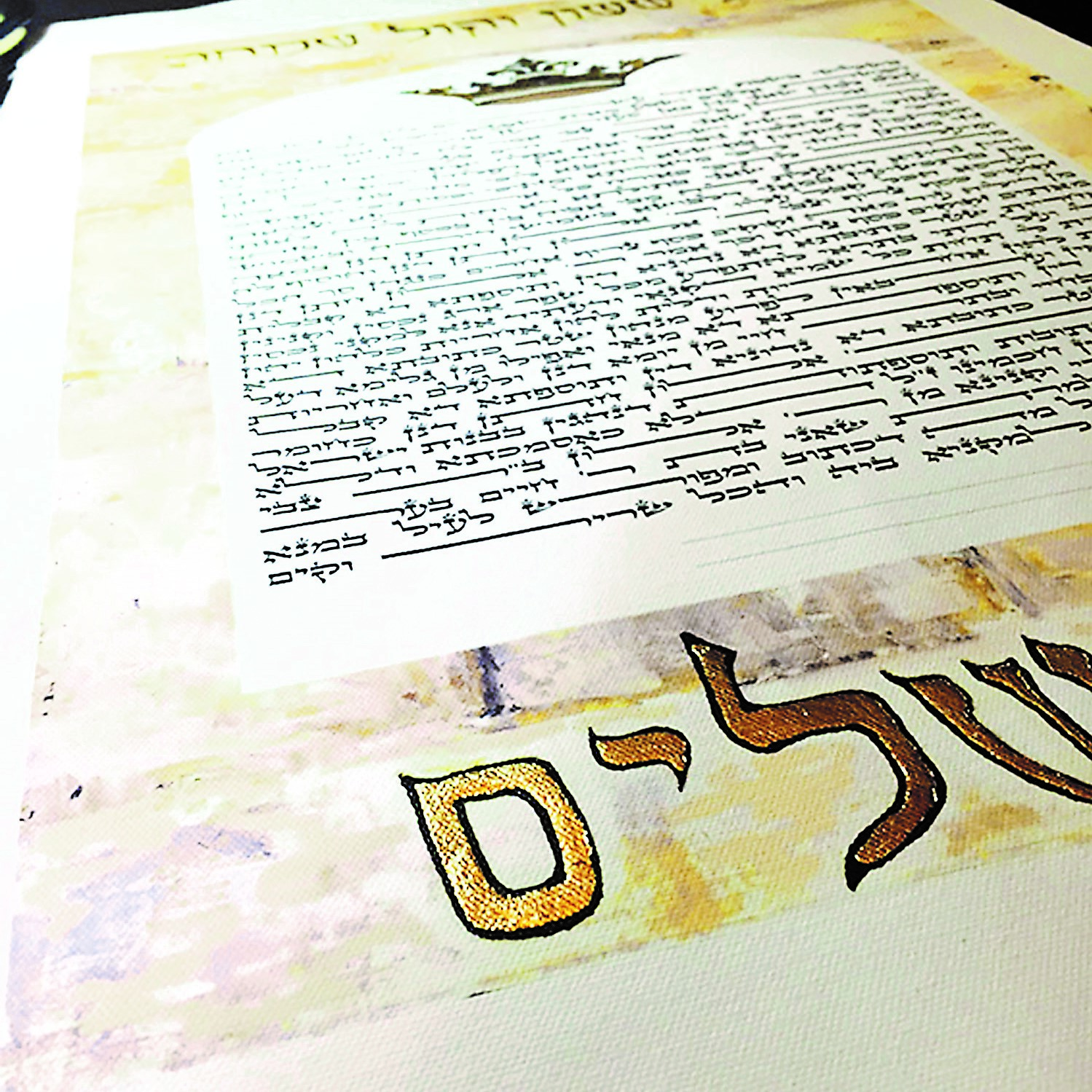click to dowload our latest edition
CLICK HERE TO SUBSCRIBE TO OUR NEWSLETTER


Published
4 years agoon
By
adminJORDAN MOSHE
Common features include a ketubah (marriage contract) that is co-signed by two witnesses, a chuppah (wedding canopy), a ring the groom gives the bride under the canopy, and breaking a glass.
There is, however, no reason why couples can’t introduce a certain creative flair to their special day. Many people have taken this to heart, and created unique and beautiful art to ensure their weddings live on long after the event.
For Natan Crouse, the chuppah itself is the canvas. Crouse has been crafting unique and individually-designed canopies for the past sixteen years, an opportunity he owes to his own sister’s wedding.
“When my sister got married, my mother didn’t want a red shul chuppah for her to get married under,” he says. “So, we designed the first white chuppah in South Africa, and my mother started lending it out to people, but would require us to set it up for them.”
With time, the chuppah became Crouse’s responsibility, and he began charging for its hire, delivery, and set up. “It wasn’t something I planned, it just started growing on its own. I started to develop new designs and looks so that brides could choose what suited them.”
As more people began to hire his chuppot, Crouse broadened his selection, deciding whether to work with a pre-built frame or designing a new one as opportunities arose. “In some cases, I’ve redesigned the fabrics for the existing frames to give them a different feel,” he says.
Crouse has undertaken many novel designs over the years, often investing hours of time and effort into his craft. From placing a real chandelier in his “Tuxedo Chuppah” to stringing up crystals and pearls in the hand-beaded “Crystal Chuppah”, he has had plenty of fun in the process.
Because the only traditional element about a chuppah is the fact that it has to be a canopy over the couple’s head, Crouse has had ample opportunity to introduce novelty. “It has become popular belief that a chuppah should be square with four open sides like the tent of Avraham,” he says. “But essentially speaking, it used to be a tallit that was held up by four people without necessarily using poles to hold it up.
“Every bride has their style, and if they wish to add a little something to personalise it, I’m more than willing to try to help them accomplish this.”
Rabbi Ryan Goldstein has used his artistic skill in creating illuminated ketubot, adding colour and life to the halachic document.
Goldstein believes the ketubah, which details the husband’s principal obligations to his wife such as providing her with food, clothing, and affection, should be proudly displayed in a Jewish home. He is inspired by the artistic designs that decorated ancient Jewish scripts centuries ago.
“I took art in high school, and did many drawings as I was growing up,” says Goldstein. “After becoming a rabbi, I studied the art and halachot of safrut (religious scribing) with Rabbi Pliskin and decided that instead of using the talent only to write Torah scrolls, tefillin (phylacteries), and mezuzot, I’d turn to a more artistic angle.”
Goldstein devotes a lot of effort to bringing his artistic vision to life on the scroll. Using gold leaf, intricate illustrations, even monograms of the bride and groom, he personalises the ketubah as much as possible.
“I want it to look like ancient illuminated documents and Bibles,” says Goldstein. “They are in my head, and I just need to bring them into the world. I’m always open to the bride and groom’s own interpretations and designs, mixing old and new for a beautiful outcome.
“Some people are reticent to display their ketubot publicly. My take on this is that ketubot are and have been synonymous with proof of Jewishness. Shouldn’t we be proud to display this document to everyone who comes into our homes?”
Regarding the last part of the ceremony, Nicki Mirkin and Michelle Freeman literally pick up the pieces of glass and make them into something beautiful. Their project, Rebuilding the Pieces, uses the broken glass under the chuppah or the plate that is broken at an engagement (a remembrance of the destruction of the temple) to create a beautiful and sentimental art piece for display in the couple’s home.
“It can include anything the couple wants,” says Mirkin. “From psukim (scripture verses) to photographs, logos, to luxurious papers.
“We enjoy the artistic challenge, and love the fact that we have an opportunity to create a piece that is precious, symbolic, and sentimental.”
“Each piece is individual and beautiful,“ they say. “We’ve enjoyed using many art mediums, graphic design, and colour. Each piece is a joy to create.”
